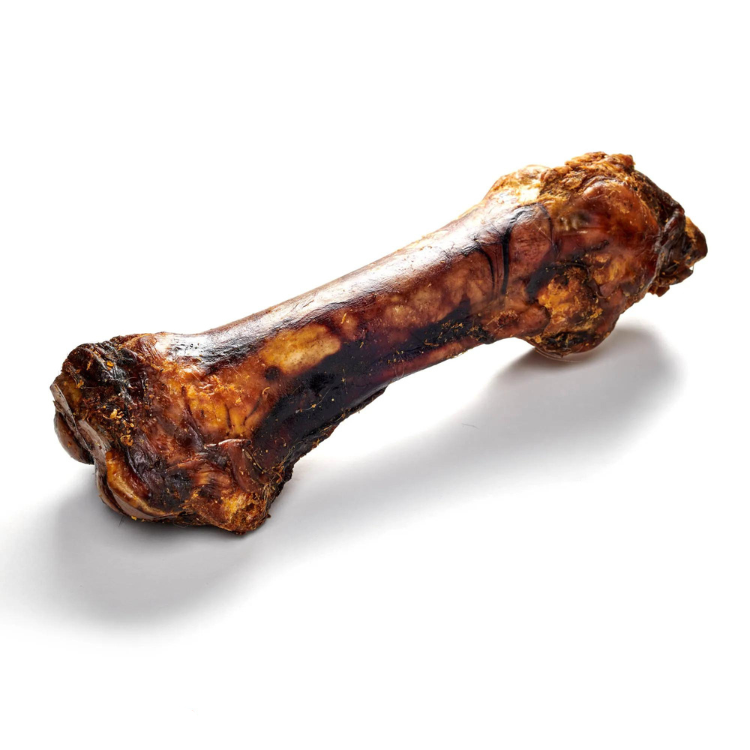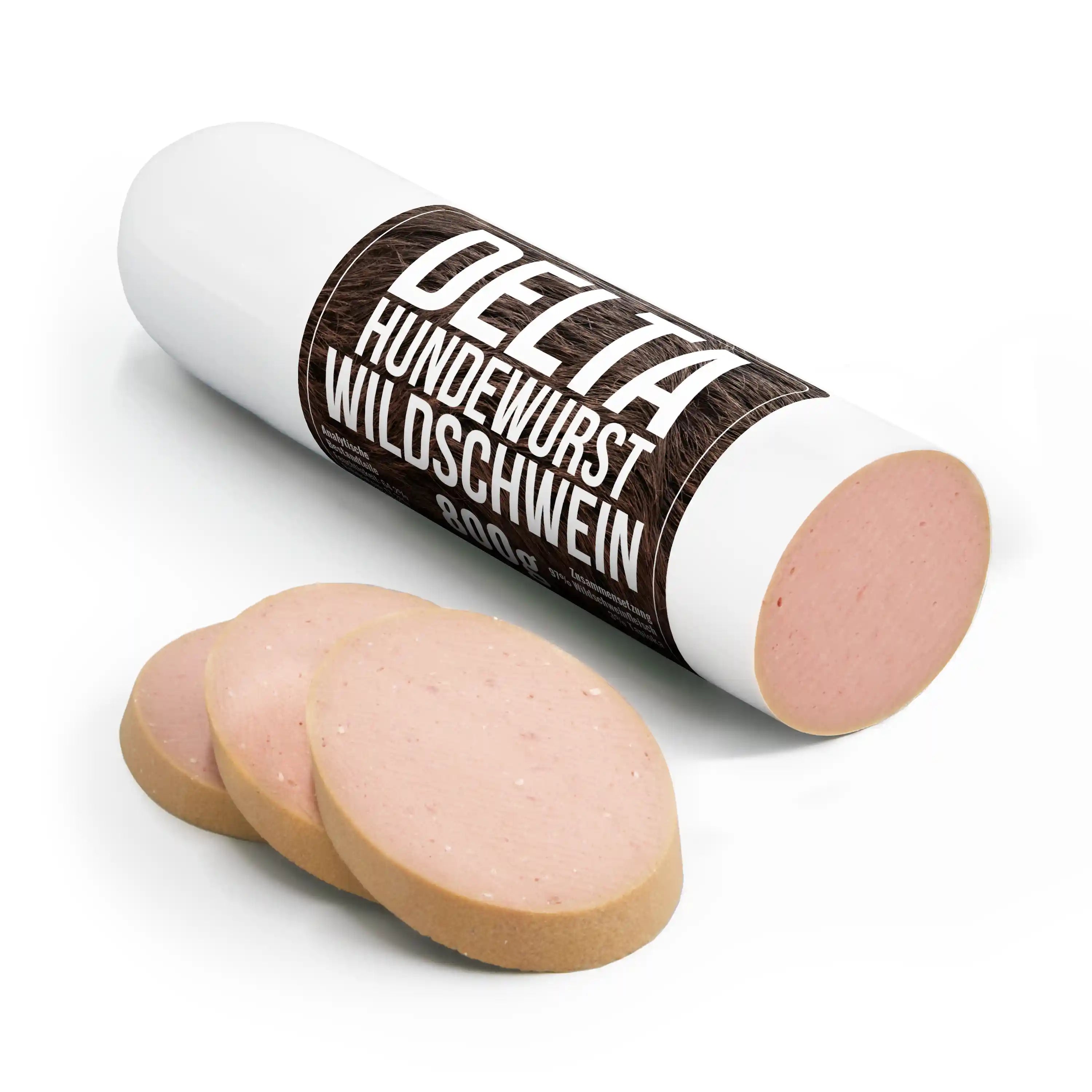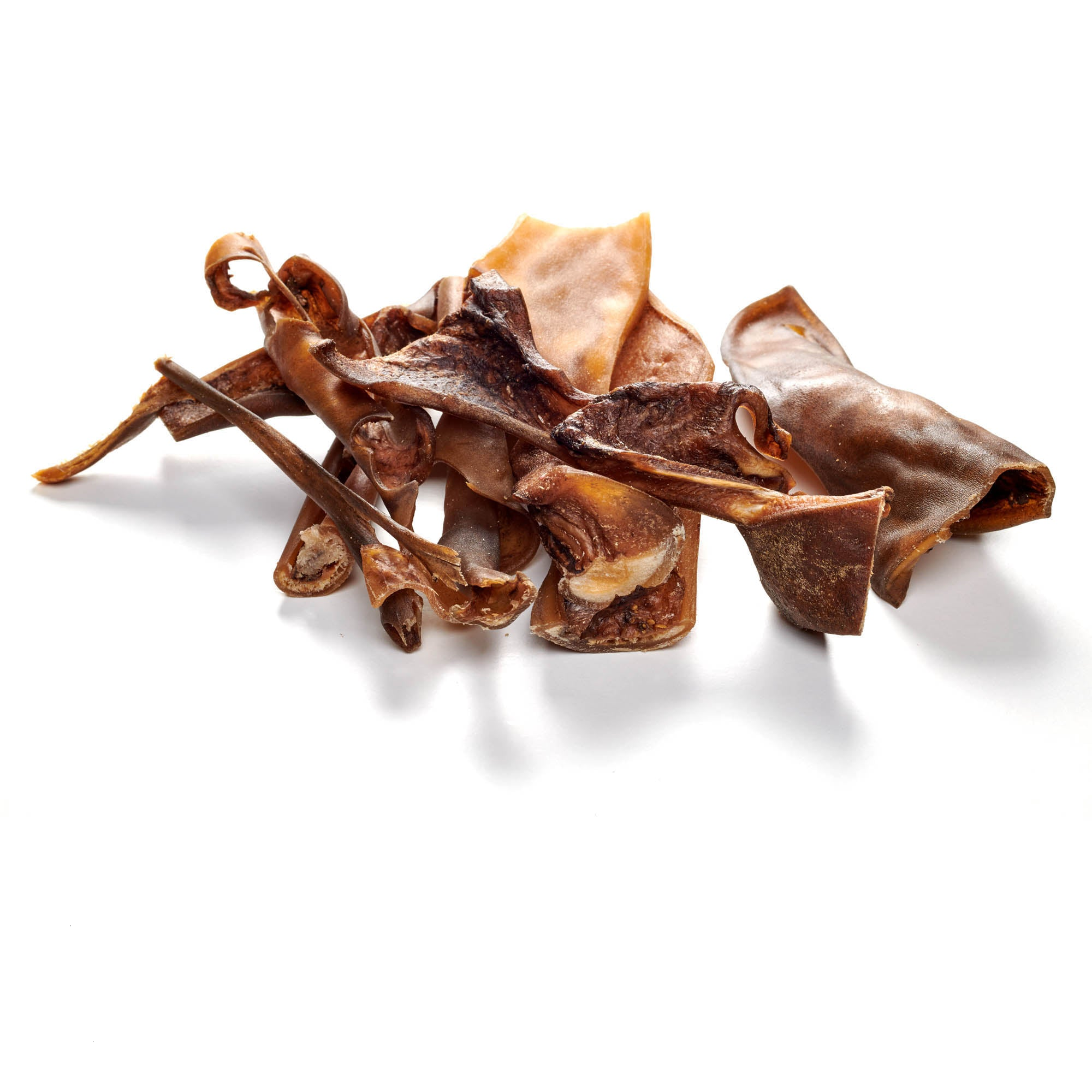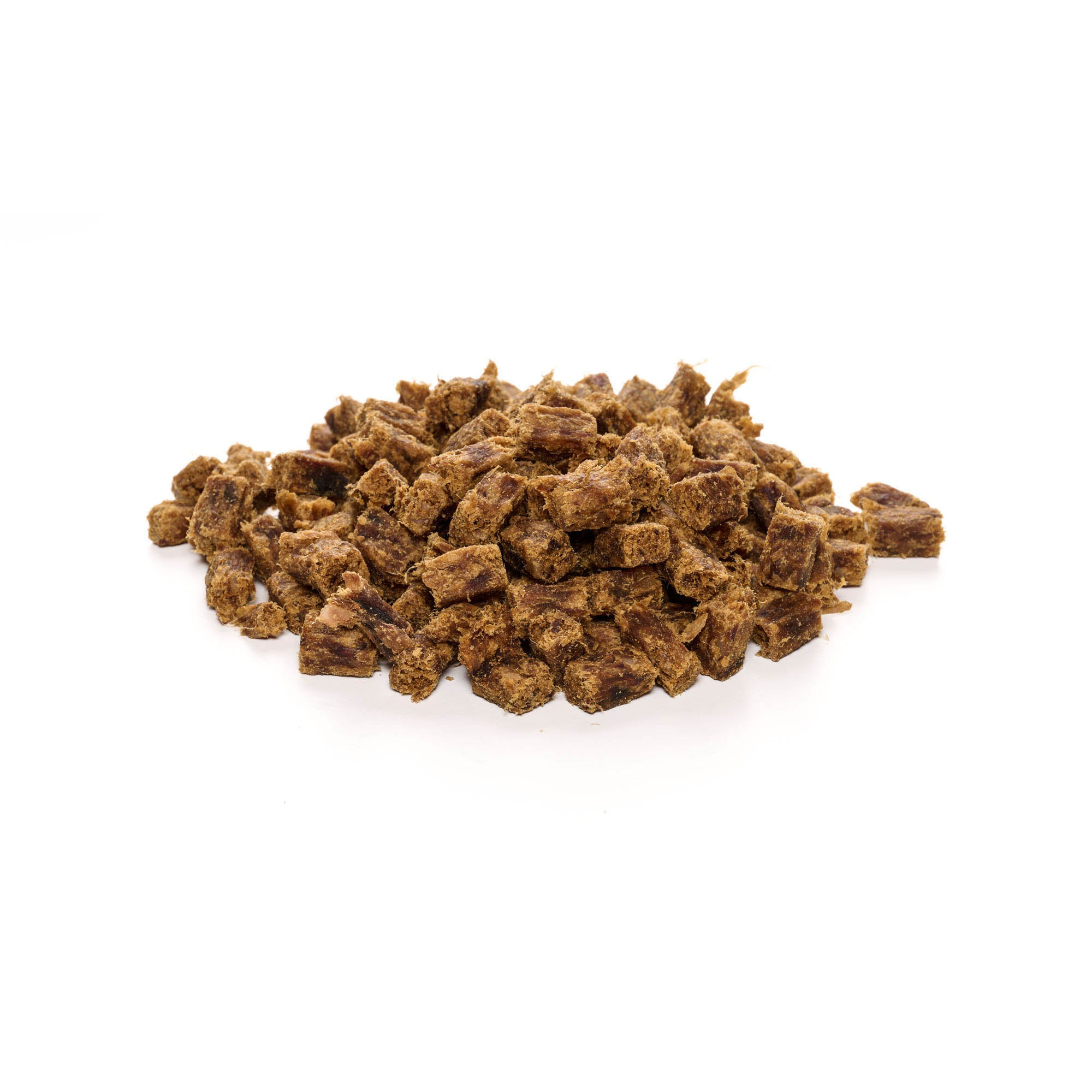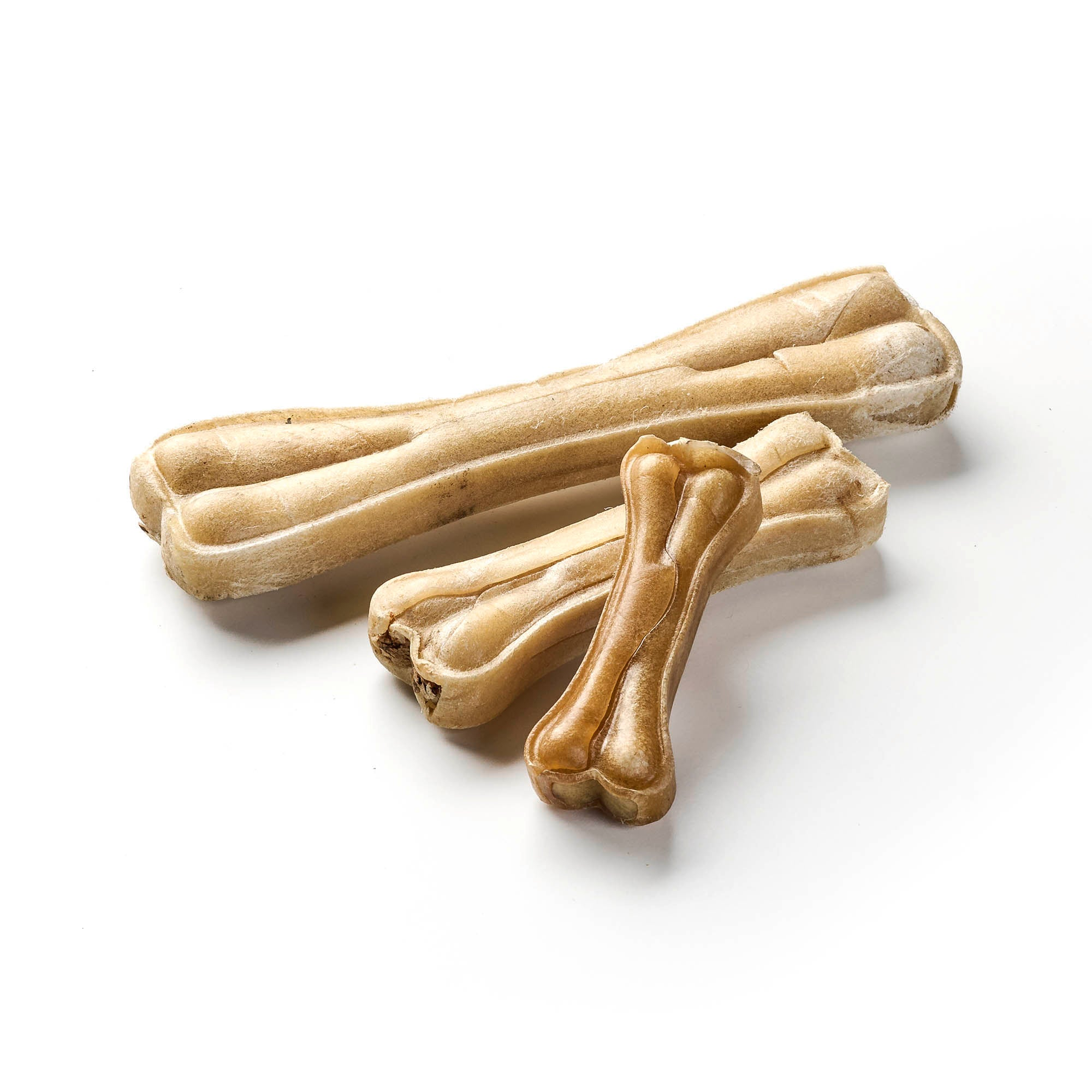
Dogs in the car - How to keep your four-legged friend safe
Share
Every dog owner knows it: your loyal four-legged friend looks on with wide eyes when you set off. So why not just take him with you? A car trip with your dog can be a great adventure, but it can also bring with it some challenges. To ensure that the trip is as safe and pleasant for your dog as it is for you, there are a few things to consider.
Content: Dogs in the car - How to keep your four-legged friend safe
- Risks for dogs in the car
- Tips for safe travel with dogs in the car
- Preparation before the trip
- Behavior while driving
- Behavior in emergencies
- Legal aspects and regulations
- Conclusion
Spoil your dog with high-quality chewing products from our range!
Your dog's safety in the car should always be your top priority. Careful preparation and the right measures can ensure that both a short vacation and long trips with your dog are safe and stress-free. A safe journey in the car is important not only for your dog's comfort, but especially for his health. Accidents can be avoided if the dog is properly secured and you take all necessary precautions.
Risks for dogs in the car
There are several dangers lurking during car travel that can compromise your dog's safety. It is important to be aware of these risks and prevent them. Failure to secure your dog properly can result in serious injury if an accident occurs. Unsecured dogs can be thrown around the vehicle during sudden braking maneuvers. This can not only injure or even kill the dog, but also seriously endanger other occupants of the vehicle. But the car is not only a danger for your dog while driving, because on hot days a car can quickly turn into a deadly trap. Dogs cannot sweat and therefore overheat quickly if left in a closed vehicle. It is also important to ensure adequate ventilation and avoid direct sunlight while driving.Not only does securing your dog prevent him from being thrown around the car in the event of an accident, it also helps keep him under control and in place while driving so he doesn't become a distraction. If the dog is jumping around in the vehicle or constantly seeking attention, this can distract the driver and massively increase the risk of an accident. Proper securing helps to minimize this danger.
Discover delicious dog snacks directly from our range!
Tips for safe travel with dogs in the car
Even though it should now be clear that taking a dog in the car can be a bit of a challenge, it should be easy to overcome with the right precautions. Of course, there are a number of safety precautions for dogs in the car. Here are some options:
- Dog car seat: A special car seat for dogs is a great way to keep your dog secure while driving. It ensures that the dog is not thrown around the vehicle and can sit or lie down comfortably. These seats often have soft padding and offer tethers to keep your dog in place. The raised seat can also help anxious dogs feel more comfortable by allowing them to see what is happening outside the vehicle better.
- Seat belts for dogs: Special seat belts can protect your dog in the event of an accident and prevent him from running around the vehicle. These belts attach to the vehicle's regular seat belts and work similarly to a human seat belt. They keep the dog securely in the seat and prevent him from being thrown around the vehicle in the event of sudden braking or an accident. Many models are adjustable and can be adjusted to the dog's size to ensure maximum comfort and safety.
- Dog crates and cages: A dog crate or cage provides a safe space for your dog during the journey and minimises the risk of injury. Crates and cages can be securely anchored in the car to ensure maximum safety. Not only do they provide protection in the event of an accident, but they also give the dog a sense of security as they are confined in a confined space. This can be particularly calming for nervous dogs. Some crates are also designed to allow good ventilation and visibility, making the journey more comfortable for your dog.
- Dividers: Dividers are a practical alternative to dog crates and cages. They separate the trunk from the passenger compartment and provide a safe area for your dog while driving. These grilles are permanently installed in the car and prevent your dog from entering the passenger area, increasing the safety of both the dog and the passengers. Dividers allow the dog more freedom of movement than a crate and are particularly useful for larger dogs who feel more comfortable in the trunk. They provide adequate ventilation and visibility, making the journey more comfortable for your dog.
You've probably seen it on social media or in films and series: dogs that love to stick their noses into the wind while driving. Even though it looks cute and the dogs seem to like it, it's actually quite dangerous.
Imagine having to suddenly make an emergency stop: your dog's body is thrown forward while his head is outside. This can lead to serious injuries to the neck and head. In addition, the strong wind alone can irritate your dog's eyes, ears and respiratory tract. It is therefore much safer to keep your dog well secured and inside the vehicle during the journey.
Schedule regular breaks
Schedule regular breaks so your dog can get some exercise, drink water , and relieve himself. This is especially important on long journeys. Breaks also provide an opportunity for short walks, which will help keep the dog calm and balanced.
Ensure proper ventilation
Imagine you're making a quick stop at the supermarket to run a few errands. Your dog stays in the car because he's not allowed in. The sun is shining and the temperature is rising quickly. It's easy to underestimate how quickly a car can turn into a dangerous heat sink if there's not enough ventilation.It is therefore extremely important that the vehicle is adequately ventilated to avoid overheating, especially if the dog is left alone in the car. On hot days, a car can turn into a life-threatening trap in a matter of minutes. Dogs cannot sweat, they pant instead, and therefore overheat quickly, which can lead to heat stroke or even death. Make sure the windows are slightly open to ensure constant air circulation and use sunscreens to minimize direct sunlight.The danger for the dog is really great in such situations. It is not uncommon for concerned passers-by or the police to smash the windows of a car to rescue an overheated dog. To avoid such dramatic measures, it can be helpful to put a clearly visible note on the car. On this note, you should say that you will be back shortly and leave a telephone number where you can be reached quickly. This can reassure potential dog rescuers.
No dogs in the front of the vehicle
Just as children are not allowed to sit in the front of the vehicle for safety reasons, your dog should also stay in the back of the car. An unsecured dog in the front can be seriously injured in the event of a sudden braking maneuver or an accident. It could also unintentionally hinder the driver by jumping on their lap or blocking the pedals. To avoid such dangers, your dog should be placed safely in the back of the car. There it is better protected and cannot influence the driver.
Preparation before the trip
Good preparation is the key to a safe and stress-free trip with your dog. Here are some important steps to take before you travel.
Training your dog for car rides
Before you set off on a long journey, it is helpful to get your dog used to car rides. Puppies and young dogs in particular benefit from this type of car training. Start with short journeys to familiarize the dog with the vehicle. Reward him with training snacks after journeys so that he develops positive associations with the car.
Provide water and food
Make sure you bring plenty of water and dog food for the journey. During the journey, it is important to take regular breaks to give your dog the opportunity to drink water and eat a small meal. However, avoid giving your dog a large meal shortly before the journey to avoid motion sickness or nausea in your dog. Small snacks such as chews can be ideal during breaks to satisfy a little hunger and keep him happy.
Emergency equipment for dogs
Although a first aid kit is required for people in the car, there is no such requirement for dogs. Nevertheless, we strongly recommend that you take appropriate equipment for your four-legged friend so that you can also administer first aid to the dog . A well-stocked emergency kit should include things like a spare leash, a blanket, first aid supplies and the contact information of the vet. In addition, it can be useful to have a flashlight and a towel on hand. A towel can not only serve as a base, but can also be used to dry your dog if he gets wet. A flashlight will help if you have to search for your dog in the dark or if you have a breakdown at night.
Behavior while driving
It is also important to follow a few rules of conduct while driving to ensure your dog's safety. A quiet and stress-free environment in the car will go a long way towards ensuring that your dog feels comfortable and enjoys the journey. Loud music, on the other hand, could be counterproductive.
Pay attention to the dog
While driving, pay attention to your dog from time to time. Observe his behavior and body language to make sure he is comfortable and not showing any signs of stress or discomfort. A quick glance back or a soothing voice can do wonders to calm the dog. Additionally, it is helpful to regularly look behind you or use a mirror to keep an eye on the dog without completely taking your attention off the road. Soothing music or a familiar smell can also help your dog feel safe and secure.
Maintain calm and composure
Stay calm and relaxed while driving. Dogs are very sensitive to their owners' moods. If you are calm and relaxed, your dog will adopt that calmness. Avoid loud noises and sudden movements that could frighten the dog. Driving at a steady pace without abrupt acceleration or braking will help keep your dog's stress levels low. If the dog does become nervous, a short break in a safe place can help to give him time to calm down.
Pay attention to the dog’s reactions
Pay attention to your dog's reactions during the journey. If he becomes agitated or shows signs of nausea, stop and let him rest for a moment. Some dogs are sensitive to car rides and need some time to adjust. Patience and attention are key here. On longer journeys, it is advisable to plan regular breaks so your dog can stretch, drink and relieve himself. Make sure the rest areas are safe and quiet to avoid additional stress. If your dog often suffers from motion sickness, it may be helpful to consult a veterinarian before the journey to discuss possible solutions.
Behavior in emergencies
Even during the best-prepared trip, emergencies can occur. It is important to know how to act in such situations.
Overheating of the dog
If your dog shows signs of overheating, such as heavy panting, drooling, or lethargy, stop immediately and move him to the shade. Offer him water and try splashing him with cool (not ice cold) water to lower his body temperature. Overheating can quickly become dangerous, so quick action is important.
See also: Cooling down dogs in hot weather
Accident or vehicle breakdown
In the event of an accident or breakdown, it is important to remain calm. First, secure the accident site and make sure your dog is safe. Keep him on a leash and away from the road. If the dog is injured, contact a vet immediately and provide first aid.
Legal aspects and regulations
Regardless of how you choose to secure your dog, there are various legal regulations regarding transporting dogs in the car that must be observed. These regulations vary by region, but in general there are some basic rules.
Legal regulations for transporting dogs in cars
In Germany and German-speaking countries, there are specific laws that stipulate that dogs must be secured in cars. This is not only to protect the dog, but also to ensure the safety of all vehicle occupants. According to the German Road Traffic Regulations (StVO), animals must be secured in such a way that they do not become dangerous projectiles in the event of an accident or sudden braking. As mentioned, special seat belts, dog crates or partitions can be used for this purpose. Similar regulations apply in Austria, Switzerland and also in France.
Fines and penalties for violations of regulations
Violations of the legal regulations on securing dogs in cars can lead to fines and penalties. In Germany, unsecured dogs can be considered cargo, which is an administrative offence if not secured correctly. This can lead to fines and points in Flensburg. In Austria and Switzerland, too, violations of the obligation to secure dogs can result in heavy fines. In France, the penalties for unsecured dogs are also high. In addition to fines, serious violations can also result in points on your driver's license and even driving bans.
Acceptance options and TÜV
In Germany - and as far as we know worldwide - there is no specific approval option for safety devices for dogs in cars by official bodies such as TÜV or DEKRA. These organizations check the general road safety of vehicles, but not specifically the installation of seat belts, dog crates or dog barriers. However, there are some safety devices that are tested and certified by these organizations. Products that carry the TÜV or DEKRA seal have been tested for their safety and effectiveness. It is therefore advisable to check whether safety devices for dogs are certified by recognized testing organizations before purchasing them. Such certification can not only help reassure the owner, but can also be helpful in the event of a police check or an accident to prove that all safety precautions have been taken.
Conclusion
Your dog's safety during car travel should always be your top priority. With proper preparation, appropriate safety equipment and compliance with legal requirements, you can ensure that your four-legged friend is safe and comfortable on the road. Remember to take regular breaks and ensure adequate ventilation to avoid overheating. A good restraint not only protects your dog, but also all the occupants of the vehicle from potential dangers. With careful planning and attention, you can ensure that every car journey is a pleasant experience for your dog. It is worth taking the necessary precautions to make the journey safe and stress-free for everyone.
Reward your best friend with our dog treats!

